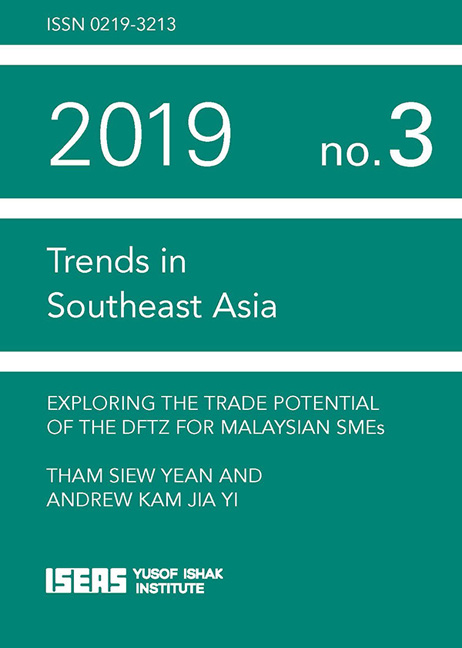
- Publisher:
- ISEAS–Yusof Ishak Institute
- Online publication date:
- January 2020
- Print publication year:
- 2019
- Online ISBN:
- 9789814843447

Malaysia established the Digital Free Trade Zone (DFTZ) to facilitate the development of e-commerce and the country's small and medium enterprises' (SMEs') exports. The data revealed thus far indicates an increasing number of SMEs coming on board the DFTZ e-commerce platforms. The publicly disclosed data focus on the value of exports achieved but do not show whether these are from new or existing exporters or whether they are re-exports. They also do not highlight Malaysia's imports through the zone. The overall trend signals that Malaysia is losing its bilateral revealed comparative advantage in exports to China, as well as an increasing use of imports for exporting to China. While the DFTZ facilitates both exports and imports, differing standards and customs processes in different export destinations, including China, will require Malaysian SMEs to know and understand the standards and customs processes governing imports in each export destination involved. Imports are also encouraged by the de minimis rule, which allows duty- and tax-free imports of up to RM800 into Malaysia. Overall, imports can help enhance the competitiveness of Malaysian SMEs, expand choices for Malaysian consumers, as well as facilitate re-exports. A clearer understanding of the role of DFTZ in facilitating trade will require more detailed data collection, and a closer investigation of the imports going through the zone, and their uses.
 Loading metrics...
Loading metrics...
* Views captured on Cambridge Core between #date#. This data will be updated every 24 hours.
Usage data cannot currently be displayed.